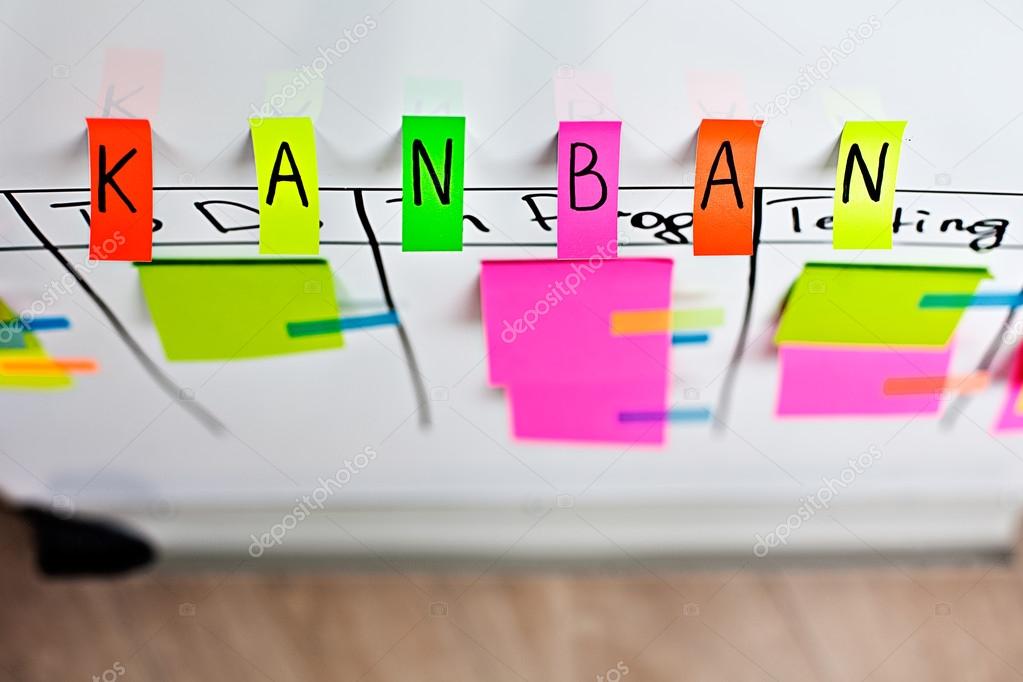Kanban- Definition, Process, Principles, Practices, Kanban Board, Advantages and Disadvantages [PDF Inside]
Kanban is a framework that takes place under the Agile methodology. It was formed in the late 1940s by a Japanese engineer named Taiichi Ohno. The agile Kanban Framework concentrates on visualizing the whole project on boards in order to increase project transparency and collaboration between team members.
Kanban is the simplest framework. It allows project managers to successfully manage and keep track of their projects. Unlike some other popular frameworks, Kanban believes in introducing little but meaningful changes in the continuing setup.
What you are going to learn?
Kanban Definition
Kanban is a Japanese word that means ‘Visual board’ or ‘Sign’. It is a way to visually guide the workflow of an organization. Using kanban makes it easier to stay productive, and it helps to quickly identify and solve issues in the workflow.
Or
Kanban is a process designed to help you improve workflow and to use your team’s full capacity.
Or
The Kanban Method is an approach to incremental, evolutionary process and systems change for organizations.
Or
Kanban is a project management technique that gives project managers full clarity in the task management process.
Understanding Kanban Process
The main idea of kanban is that the flow of work is displayed on a large board with different columns. Work is represented by a card on the board, and the board is divided into different columns. Each column on the board displays a different state of the work process, and as the work continues, the card is shifted from one column to the next to the next to track progress and possible completion.
Traditional Kanban boards are divided into three columns named something like:
- To accomplish/ To do
- Working/ Doing
- Finished/ Done
Various workplaces may use different numbers or names for the columns, but the idea of shifting the kanban card from column to column as work is completed remains unchanged.
Sometimes, the board can also consist of rows, called “swim lanes,” that denote work by different teams.
The kanban method uses something like a bulletin board put in the work area.
Kanban Board
A kanban board is an agile project management tool created to help visualize work, limit work-in-progress, maximize efficiency and improve the flow of work.
It can help both agile and DevOps teams specify the order in their daily work. Kanban boards use cards, columns, and constant progress to help technology and service teams commit to the right amount of work, and get it done.
Elements of Kanban Board
- Visual Signals
- Columns
- Work-in-progress (WIP) Limits
- Commitment Point
- Delivery Point
Types of Kanban Boards
- Physical Boards
- Digital Boards
Practices of Kanban
Here are 5 important practices of kanban:
1. Visualize Workflow
Visualize your activity on a board with cards to represent user stories in your product inventory. Use different colors to illustrate the theme of your user stories.
For a basic Kanban board, tag one column “TO-DO” (to accomplish) and another “DONE” (finished). Label columns in-between “TO-DO” (to accomplish) and “DONE” (finished) to represent either the type of work or whoever undertakes it. Divide these columns into two and label “Doing” (Working) and “Done” (finished). Place the cards into columns according to their workflow status. This allows the whole team to view work in progress, work that has been accomplished, and work to be started next. As work gets done, shift your cards from left to right.
Make sure, to keep your column labels simple and intuitive.
2. Limit work in Progress
The fundamental concept in using Kanban and visual boards is to have every piece of work move from one operation to the next in the most productive way. To bypass barriers and accumulation of work, managers have to set a work-in-progress limit. This limit should equal what can be reasonably performed.
Setting limits will assure that you find the top priority jobs that should be accomplished first and quickly alert everyone when the amount of jobs in one ‘column’ (or operation) exceeds the work in progress limit.
3. Focus on Flow
The Kanban board implemented in the first step gives a great tool to observe how work is switching from one operation to the next. This will identify barriers and allow managers to concentrate on interruptions in the normal flow.
Always remember one thing; smooth flow= creating value.
4. Continuous Improvement
Continuous improvement is the 4th principle of Kanban. This is a typical theme in most lean manufacturing processes. Unless you are working at maximum efficiency, you will need to continue improving. As you implement Kanban and lean manufacturing principles within your works, you will need to adjust to maintain this improvement.
Remember one thing: even after applying Kanban, the work is never truly finished.
5. Take Feedback
The most important entity for any business is the consumer, and implementing an effective feedback system is very important.
On the Kanban boards, a column can be made for feedback from either an external evaluator or the consumers themselves. In this way, the quality of the delivered work can be maintained constantly.
With the help of Kanban, you have feedback loops of different kinds, including:
- Service delivery reports
- Policy reviews
- Operations reviews
- Risk evaluation meetings
- Daily stand up sessions

Advantages of Kanban
With Kanban, you can improve not only in your task planning but also in the output produced by your teams.
Here are Some Advantages or Benefits of Kanban;
1. Identifying Issues
An important practice of Kanban is to limit work-in-progress. It is a basic aspect in organizations to multitask. However, multitasking has been seen to be problematic, specifically in terms of efficiency.
The need to switch regularly between tasks and work can influence your task’s completion.
Setting work-in-progress lets you and your team highlight any barriers in your improvement process, which could be because of a lack of focus, resources, or techniques.
2. Flexibility
Unlike other frameworks, Kanban isn’t restrictive. There are no definite phase durations and preferences are based on the most recent data. This makes it fit for teams in any organization to use a Kanban board to collaborate, document work, and track their work progress.
Kanban is an accommodating method that, because of its lax practices, allows teams to use the board for various purposes. The column structure of a Kanban board is an excellent way to organize information.
3. It can Save Time
As part of the Agile practice, implementing a Kanban board will allow your team to improve throughout the development process. By using a shared visual management tool, each team member can see all activity involved in the project process, and should any issues appear, the transparency will allow them to be fixed quickly in the process. This inevitably allows enough time and resources for your team to continue providing a high-quality product or service.
4. It Empowers Teams
As every team member involved in a project can access the kanban board, everyone shares the responsibility for ensuring work gets moved along the board properly and eventually to the “Done” column. Having this kind of responsibility within your team members can foster communication and collaboration skills.
5. Balance Productivity
By sticking to the basic practices of Kanban, limiting the amount of work-in-progress will keep workers from consuming time on menial tasks. This limits the risk of work excess and the productivity flow being slowed down. The visualization of workflow can ensure even streams of productivity. This also helps to predict the service delivery time.
Disadvantages of Kanban
As a lean tool to enhance the manufacturing process, the kanban approach has its problems;
1. Less Effective in Shared-Resource Situations
Irregular orders may render the kanban process unproductive. For example, if your upward production line made multiple parts, your requests to make more parts required by the downstream line will require a buffer to confirm that the downstream line does not run out. This is because every production line needs a different signaling card.
2. Product Mix or Demand Changes May Cause Problems
The kanban system accepts regular, repetitive production plans. The kanban concept suggests that the warehouse or the supplier should deliver elements to the production line as and when they are required.
Changes in demand and products may impact the functioning of the kanban system. Thus, the system is less suitable for enterprises where product volumes and mixes fluctuate.
3. The Kanban System Doesn’t Eliminate Variability
The kanban method may deliver poor-quality items that need to be updated or scrapped if production is disrupted with long and unpredictable downtimes.
Kanban is structured like a traffic signal, to control the flow of traffic to satisfy customer requirements by signaling when to begin, stop or slow down production.
Any variability or unpredictability will impact the functioning of the system, making it send confusing, mixed, and incorrect signals with respect to the optimal production levels.
4. Quality Miscues
The kanban approach brings quality levels of inventory close to zero. In cases of high uncertainty and troubles in the transportation network, inventory buffers are required to guard low-grade quality from the internal operations and also from the suppliers. This slows your production process./
Kanban PDF
Related Posts
Baixar Ativador Window 7 kinemaster download forpc kinemaster para pc mx player for pc Top License Program Descargar idm crack 2021 idm crack 2021 Ativador Windows 7




